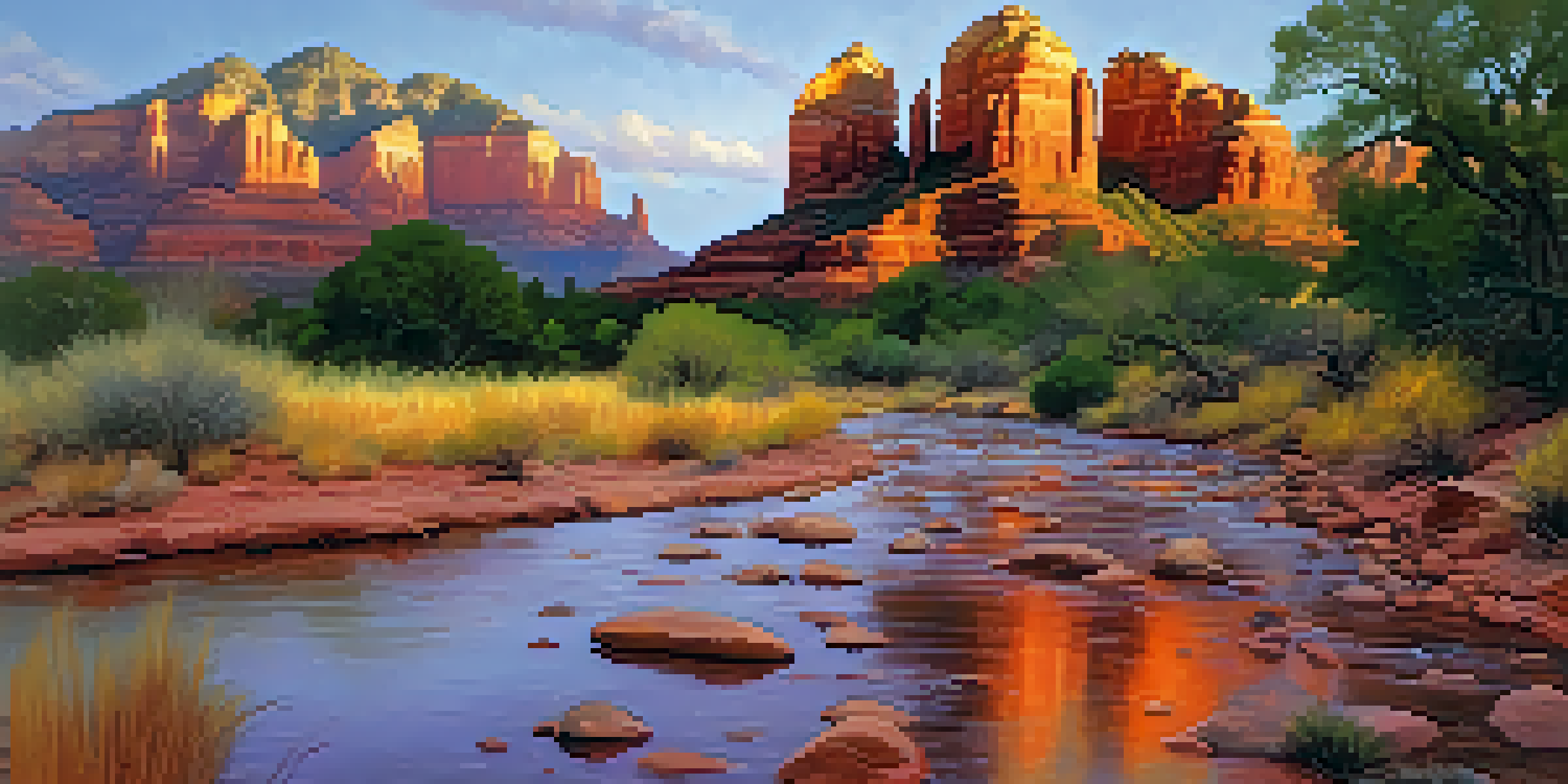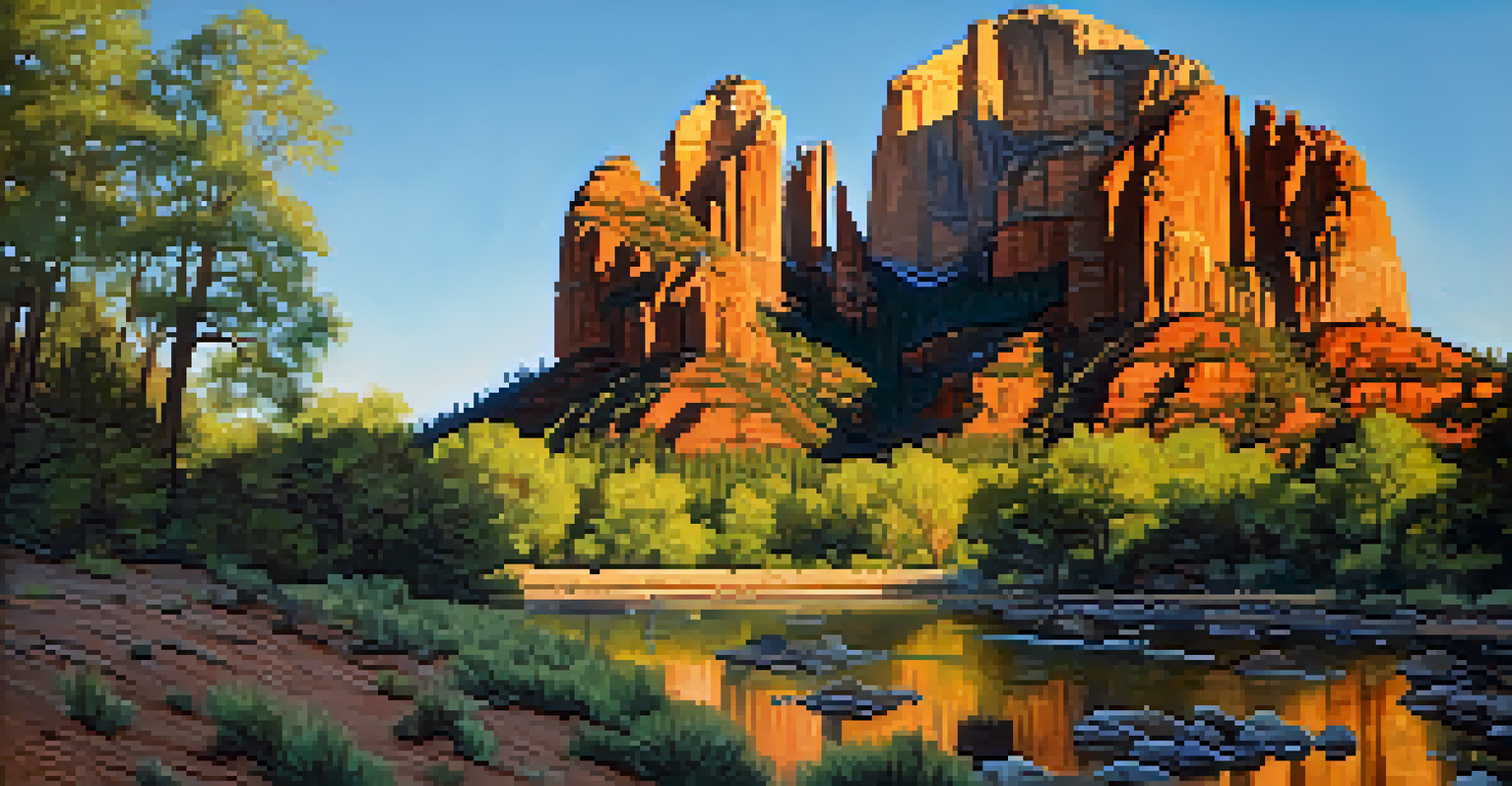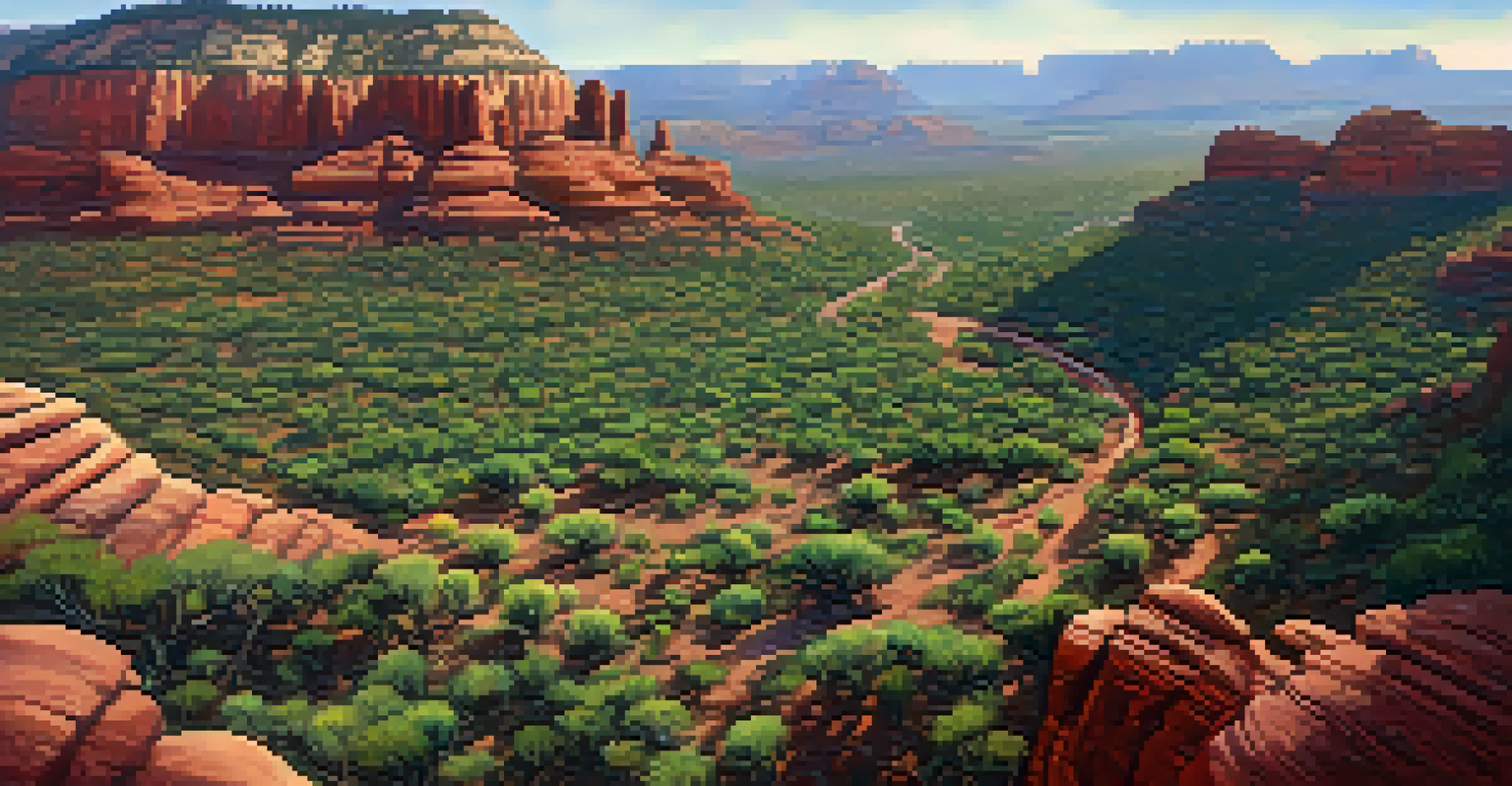The Role of Erosion in Shaping Sedona's Landscape

Understanding Erosion and Its Types
Erosion is the natural process of wearing away soil and rock, significantly shaped by water, wind, and ice. It’s a bit like how a sculptor chisels away at a block of stone, revealing the masterpiece within. In Sedona, erosion plays a crucial role in forming the iconic red rock formations, creating a landscape that captivates visitors.
The landscape is a canvas, and erosion is the artist, sculpting the land over time.
There are various types of erosion, including mechanical, chemical, and biological. Mechanical erosion occurs when physical forces break down materials, while chemical erosion involves the alteration of minerals through chemical reactions. Each type contributes uniquely to Sedona's geological features, making the area a fascinating study in natural art.
Understanding these types can help us appreciate the landscape even more. When you see the stunning cliffs and deep canyons, remember that they are the result of millions of years of erosion. This process not only shapes the land but also creates habitats for unique flora and fauna, highlighting the interconnectedness of nature.
The Role of Water Erosion in Sedona
Water erosion is particularly influential in shaping Sedona's landscape. When rain falls, it can lead to runoff that carves out canyons and alters rock formations over time. Picture a gentle stream flowing over rocks; it may seem subtle, but over years, it can create breathtaking gorges and valleys.

Flash floods, which are common in the region, also play a significant role. These sudden surges of water can dramatically reshape the landscape in a matter of hours, underlining the power of water as an erosive force. The impact is visible in the dramatic formations that make Sedona a prime location for photography and outdoor activities.
Erosion Shapes Sedona's Landscape
The natural processes of erosion, driven by water, wind, and ice, are fundamental in forming Sedona's iconic geological features.
Moreover, the interplay of water with the unique red sandstone creates stunning contrasts in color and texture. As water erodes the rocks, it reveals layers of sediment that tell a story of Earth's geological history. This ongoing process continues to fascinate scientists and nature lovers alike.
Wind Erosion and Its Effects on Sedona's Rocks
Wind erosion, although often less obvious than water erosion, plays a vital role in shaping Sedona's formations. Strong winds can transport fine particles, gradually wearing down rock surfaces and creating unique shapes. Think of it like a gentle artist, patiently sculpting the land over time.
Nature does not hurry, yet everything is accomplished.
In Sedona, wind erosion contributes to the distinctive spires and hoodoos that dot the landscape. These tall, thin rock formations are often the result of wind carving away softer materials, leaving behind the harder rock. This process can take thousands of years, showcasing the slow yet powerful influence of nature.
Additionally, wind erosion influences the local ecosystem by redistributing seeds and nutrients. As winds carry away particles, they can also deposit them in new locations, fostering plant growth in previously barren areas. This dynamic relationship highlights how erosion is not just destructive but also a crucial part of the ecological cycle.
The Impact of Human Activity on Erosion
Human activities can significantly influence erosion rates in Sedona. Urban development, deforestation, and recreational activities can disturb the soil and accelerate erosion processes. Imagine a beautiful landscape being slowly altered by the footprints of many visitors; it’s a reminder that we play a role in shaping our environment.
For instance, the construction of roads and buildings often leads to soil compaction and increased runoff, which can enhance erosion. Additionally, off-road vehicles and hiking trails can further disturb the natural landscape, contributing to the erosion of delicate ecosystems. It’s essential to recognize these impacts to protect the area’s beauty.
Human Impact on Erosion Rates
Human activities such as urban development and recreation can significantly accelerate erosion, highlighting the need for sustainable practices.
Conversely, conservation efforts can help mitigate these effects. By implementing sustainable practices and protecting natural areas, we can ensure that Sedona's breathtaking landscapes are preserved for future generations. It’s about finding a balance between enjoying nature and safeguarding its integrity.
Sedona's Unique Geological Features
Sedona is renowned for its stunning geological features, many of which are products of erosion. The iconic red rocks, towering cliffs, and deep canyons tell a story of Earth’s history, shaped by millions of years of natural forces. These formations not only attract tourists but also serve as a living museum of geology.
One of the most famous formations is Cathedral Rock, a striking example of how erosion has sculpted the landscape. Its distinct spires rise majestically, inviting hikers and photographers to capture its beauty. Each visit reveals new angles and perspectives, reminding us of the ever-changing nature of the land.
Moreover, the varied geological formations contribute to diverse ecosystems. The unique microclimates created by the landscape provide habitats for numerous species, making Sedona a hotspot for biodiversity. This interdependence between geology and ecology showcases the complexity of natural processes at work.
Erosion's Influence on Sedona's Tourism
The stunning landscapes shaped by erosion are a significant draw for tourists in Sedona. Outdoor enthusiasts flock to the area for hiking, photography, and exploring the natural beauty that has been sculpted over millennia. Each trail offers a unique perspective of the breathtaking formations, making Sedona a paradise for nature lovers.
Visitors are often captivated by the vibrant colors and intricate patterns found in the rocks, prompting many to share their experiences on social media. This exposure, in turn, raises awareness about the importance of preserving these landscapes. It’s a beautiful cycle where appreciation leads to conservation efforts.
Tourism and Environmental Responsibility
Sedona's stunning landscapes attract tourists, creating a cycle of appreciation and the importance of conservation to protect these natural wonders.
However, with increased tourism comes the responsibility to protect the environment. Educating visitors about the impacts of erosion and promoting sustainable practices can help ensure that Sedona’s natural beauty remains intact. By fostering a respectful relationship with nature, we can enjoy its wonders while preserving them for future generations.
The Future of Sedona's Landscape and Erosion
As we look to the future, the role of erosion in shaping Sedona's landscape will continue to evolve. Climate change and human activity are likely to impact erosion rates, potentially leading to more significant changes in the landscape. Understanding these dynamics is crucial for predicting how Sedona will look in the coming years.
Local authorities and conservation groups are increasingly focused on monitoring and managing erosion. Efforts include restoring native vegetation and implementing sustainable land-use practices to minimize human impact. Think of it as a community coming together to protect a shared treasure; every effort counts.

Ultimately, the ongoing conversation about erosion and its effects on Sedona underscores our responsibility to care for the environment. By fostering a deeper understanding of these processes, we can appreciate the beauty of Sedona while ensuring its preservation for future visitors. It’s a reminder that our actions today shape the landscapes of tomorrow.